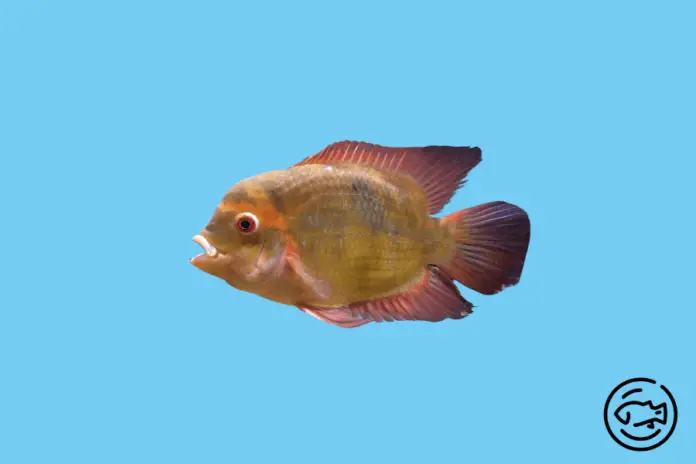When it comes to fish, the Chocolate Cichlid is one of the more interesting varieties to add to your aquarium.
These fish are a member of the Cichlidae family, which contains many other well-known freshwater fish such as the Oscar and the discus.
Chocolate Cichlids are native to South America, and their natural habitat consists of slow-moving rivers with a sandy bottom.
The Chocolate Cichlid (Scientific family name Hypselecara temporalis) is a stocky, deep-bodied fish growing about a foot long (30 cm). The body is brown with light brown vertical stripes, the fins are dark brown or black, and the eyes are yellow.
The Chocolate Cichlid is a peaceful fish that gets along well with other fish of similar size.
Although they can become territorial with other fish, they do not become aggressive.
Chocolate Cichlids are not as active as other cichlids when they are younger.
As they grow older, however, the Chocolate Cichlid becomes more active and is typically seen hovering around the surface of the water.
Juveniles tend to swim on the bottom and hide amongst rocks and plants.
Older cichlids often rest at the bottom of the aquarium and can be seen sitting on rocks, looking around for food.
Chocolate Cichlids are native to South America, found in Brazil, Colombia, and Peru rivers and lakes. They have also been introduced to other areas in Central America and Mexico.
In an aquarium environment, Chocolate Cichlids need plenty of live foods because they will not eat prepared food (such as flakes), although they will accept prepared flakes with frozen bloodworms or brine shrimp added.
They are typically inhabitants of large tanks with a minimum size of 75 gallons, though very large tanks can hold larger specimens.
Size And Lifespan
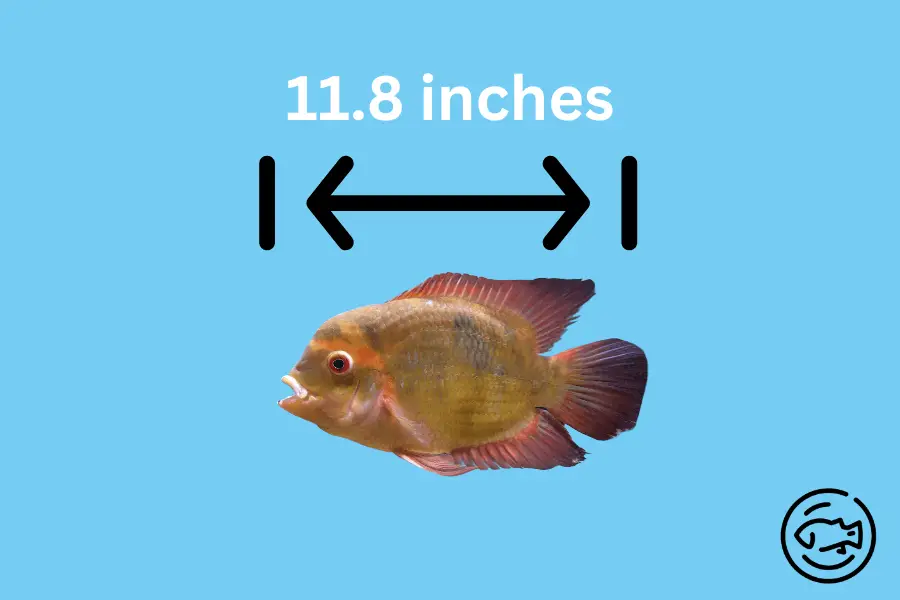
The Chocolate Cichlid grows to an average length of 11.8 inches (30 cm).
While it is not the largest cichlid species, it can live for up to 10 years in captivity with proper care.
Male and female Chocolate Cichlids are similar in size, but the males tend to have a nuchal hump (a raised area on the head) that is more pronounced than females. Additionally, their dorsal and anal fins are longer and more pointed.
Appearance
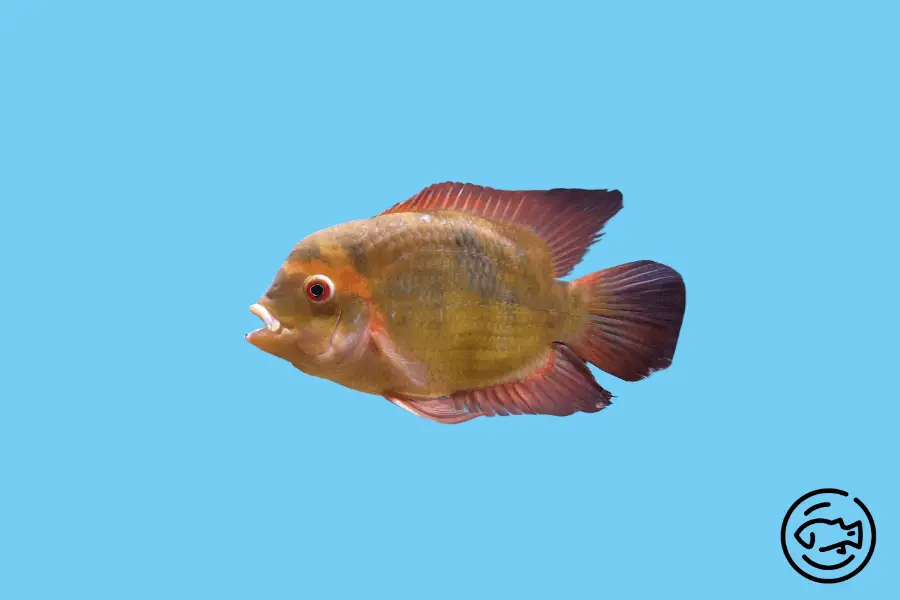
Their name suggests that Chocolate Cichlids are brown in coloration with a mottled or spotted pattern.
They have a dark vertical bar that runs through their eye and extends to the base of their tail fin.
Their fins are typically yellow or orange, with the males having more vibrant colors.
When Chocolate Cichlids are spawning, the colors of their fins will intensify, and the males will develop a nuchal hump.
Temperament
Chocolate Cichlids are relatively peaceful compared to other cichlid species, but they can be territorial towards their kind and other fish.
They are best kept in pairs or small groups, with one male per two to three females.
Chocolate Cichlids are also known to be diggers, so it is important to provide them with a tank that has plenty of substrates for them to burrow in.
The Chocolate Cichlid is a relatively easy species to care for, making them a good choice for beginner aquarists.
They are hardy and can adapt to a wide range of water conditions, but they prefer a tank with plenty of hiding places and a sandy substrate.
These fish are also good parents and often dig pits in the substrate to lay their eggs.
Chocolate Cichlids will readily breed in captivity, and their fry is easy to raise.
Diet
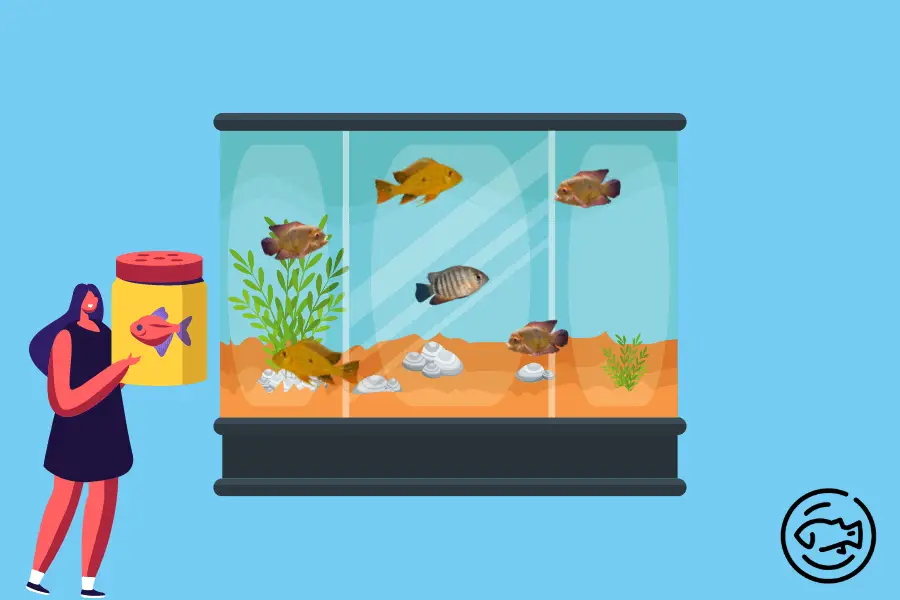
Chocolate Cichlids are omnivorous, and their diet should contain plant and animal matter.
They will accept a variety of commercially prepared foods but should also be given regular feedings of live or frozen foods.
Brine shrimp, bloodworms, and other small invertebrates are a good choice, and they should also be given plenty of vegetables, such as algae pellets, zucchini, and spinach.
Including live foods in their diet will help to keep Chocolate Cichlids healthy and promote their vibrant colors.
These fish are known to eat other small fish in the wild, so keeping them with smaller tankmates is not recommended.
Tank Size & Setup
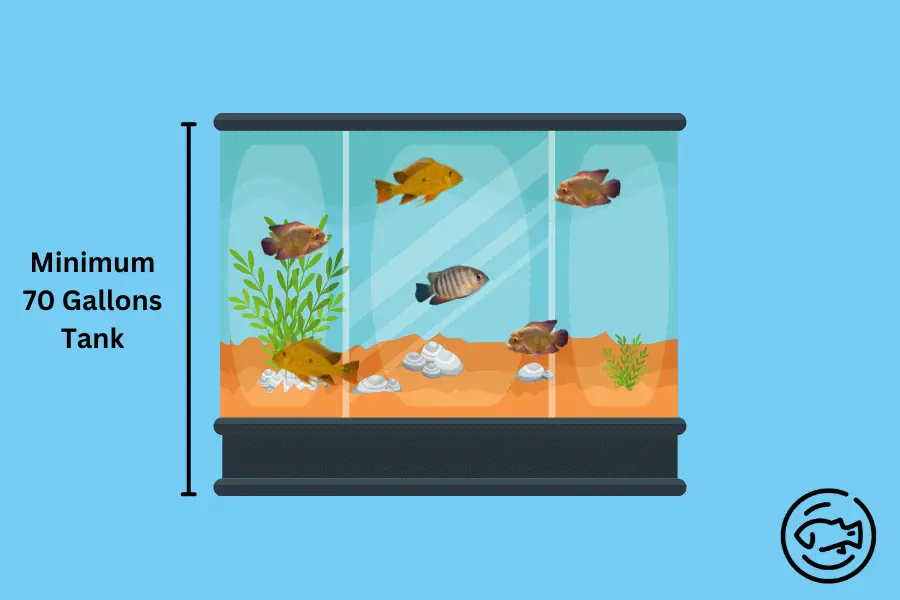
Even though Chocolate Cichlids are not the largest cichlid species, they still require a fairly large tank.
A minimum tank size of 70 gallons is recommended, but larger is always better.
Live plants can also be used, but they should be tough and withstand occasional digging.
When setting up a tank for Chocolate Cichlids, keep the filtration at a moderate rate since they prefer slightly lower water flow.
The tank should also have a tight-fitting lid to prevent them from jumping out.
With their peaceful nature, these cichlids can be kept with a wide variety of tankmates.
Water Conditions
Chocolate Cichlids are relatively hardy and can adapt to a wide range of water conditions.
However, they prefer moderately acidic to neutral water with a pH of 5.0-7.0 and a GH of 8-12 to keep them healthy and happy.
You should always check the pH and GH of your tank water before adding Chocolate Cichlids and make regular water changes to keep the water clean.
They also prefer slightly lower water flow, so ensure your filter isn’t too strong.
If the water is too hard or alkaline, Chocolate Cichlids will become stressed and more susceptible to disease.
also read: Alien Betta – Everything You Need to Know!
Temperature
Chocolate Cichlids are tropical fish and prefer water temperatures of 76-86° Fahrenheit (24-30° Celsius).
If the water gets too cold, the cichlids will become stressed and more susceptible to disease.
It is important to use a good quality aquarium heater to keep the water at the correct temperature and ensure it is always set to the same temperature.
Breeding

During the breeding cycle, the courtship and spawning of the chocolate cichlid can be a very aggressive process.
This is especially true if the pair is not well-matched, as choosing a breeding pair carefully is important to avoid aggression and injury.
Setting up a separate breeding tank is best if you plan on breeding your chocolate cichlids. This will give the pair plenty of space to courtship and spawn without being disturbed by other fish.
The breeding tank should be at least 20 gallons in size and contain plenty of hiding places for the female to retreat to if she feels threatened.
The chocolate cichlid is an egg-laying species, and once the pair has been successfully paired, the female will lay her eggs on a flat surface in the tank.
The male fertilizes the eggs, and both parents guard and aerates them.
The eggs will hatch after 3-4 days, and the fry will be free-swimming a few days after that.
At this point, you can feed them small live foods such as baby brine shrimp or crushed flake food.
The chocolate cichlid is a relatively easy species to breed. However, because they can be quite aggressive, it is important to choose a breeding pair carefully and provide them with plenty of space to avoid aggression.
Tank Mates
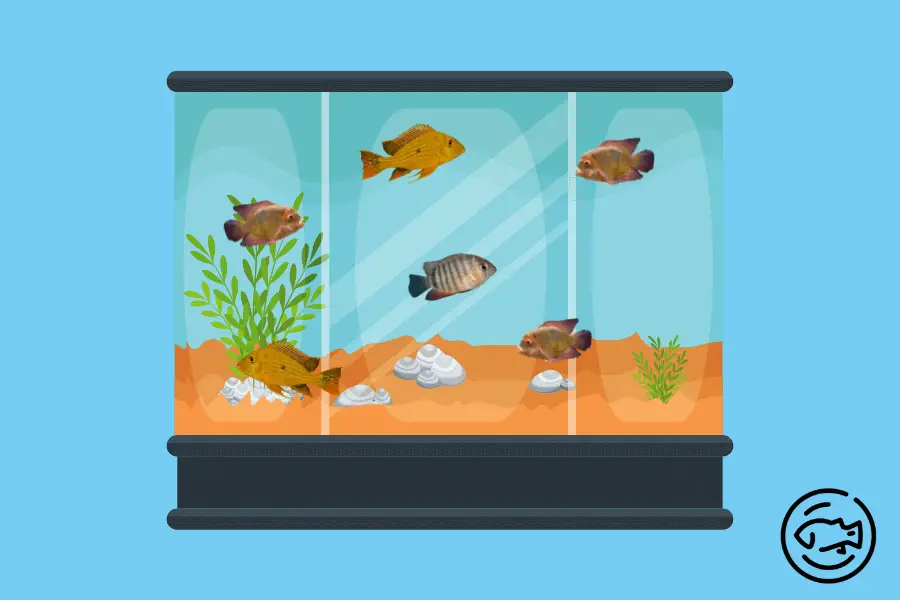
Chocolate cichlids are relatively peaceful fish, but they can be territorial toward other cichlids. They are best kept with other similarly-sized fish that are not too aggressive. Good tank mates for chocolate cichlids include other peaceful cichlids such as:
- Severum cichlids
- Festivum cichlids
- Electric blue acaras
- Geophagus cichlids
- Angelfish
While these cichlids can be kept with other fish, it’s important to remember that they are still cichlids and may show aggression towards fish that they perceive as a threat.
It’s best to provide them with plenty of hiding places and to keep an eye on them when introducing new tank mates.
While breeding in a community setting is not recommended, it can be done if the tank is large enough and there are plenty of hiding places for the female to retreat.
Disease & Prevention
Chocolate cichlids are relatively hardy fish, but they can still fall victim to disease if the water conditions in their tank are not ideal.
The main disease that affects these cichlids is Ich, which is caused by a parasite that attacks the fish’s skin.
Symptoms of Ich include white spots on the fish’s body, lethargy, and loss of appetite.
If you notice these symptoms in your chocolate cichlids, it’s important to take action immediately.
The first step is to raise the temperature of the water in the tank to 86°F. This will help to kill the parasite.
You should also do a partial water change and add a filter with activated carbon to the tank. This will help to remove any toxins from the water that may be causing stress to the fish.
If the disease is caught early, it is usually not fatal. However, if it is allowed to progress, it can kill the fish. Other common diseases affecting Chocolate cichlid are:
- Malawi bloat
- gill flukes
- cotton wool disease
- swim bladder disease
- tuberculosis
- hole in the head disease
The best way to prevent disease in your chocolate cichlids is to maintain a clean and well-filtered tank.
Regular water changes and gravel vacuuming will help keep the water clean and free of toxins.
It’s also a good idea to quarantine new fish before adding them to the tank. This will allow you to observe them for any signs of disease and treat them before they have a chance to infect your other fish.
Conclusion
The chocolate cichlid is a beautiful and relatively peaceful fish that makes a great addition to any freshwater aquarium.
They are easy to care for and breed, but it’s important to remember that they are still cichlids and can be aggressive towards other fish.
Providing them with plenty of space and hiding places will help to reduce aggression.
With proper care, your chocolate cichlids will thrive and bring you years of enjoyment.


